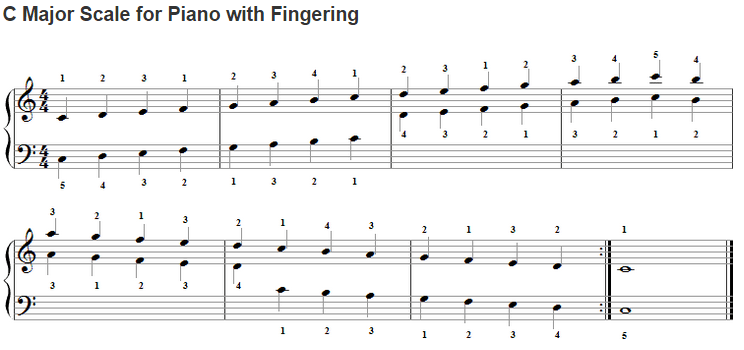How to Play Major Scales – Piano Fingering
Major scale is one of the diatonic scales. It is made up of seven distinct notes, plus an eighth which duplicates the first an octave higher. The simplest major scale is C major, the only major scale not to require sharps or flats on the musical staff and consequently uses only the white keys on the piano keyboard.
Fingering to play major scales on the piano
Here are the major scales with their fingering:
- B major scale
- B flat major
- D Major tones
- Db Major key
- E Maj scales
- F sharp or Gb major scales
- C Major scales on the piano
- G Maj notes
- A flat Major key
- F Major scales
- A Major on the piano
- Eb Major key or scale
When writing out major scales, no line or space on the stave can be skipped, and no note can be repeated with a different accidental. This has the effect of forcing the key signature to feature just sharps or just flats; ordinary major scales never include both.
- In solfege these notes correspond to the syllables : Do, Re, Mi, Fa, Sol, La, Si
- The major scale is the same as the Ionian mode.
Major scale types
Here is some major scale types.
Considerations on major scales
To construct any major scale, start with your chosen note for the root or starting note; this will be your tonic. Then move up in pitch two notes (counting each white and each black key as one note). This is referred to as a whole step, and will be the second note of the scale, or the supertonic. Move up again two notes, this is the third note of the scale, or the mediant. Next move up one note, this will be the fourth note of the scale, or the subdominant. Move up again two notes, this will be the fifth note of the scale, or the dominant. Move up again two notes for the sixth note or sub-mediant of the scale, up again two notes for the seventh note or leading tone of the scale, and finally up one note for the eighth note or octave (which is the same as the tonic).



